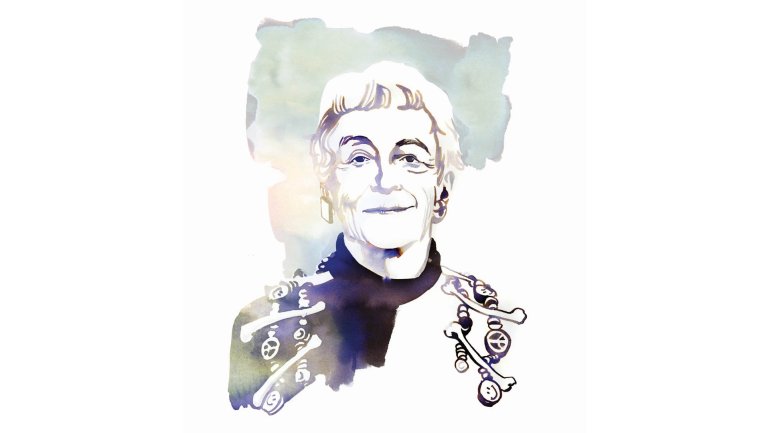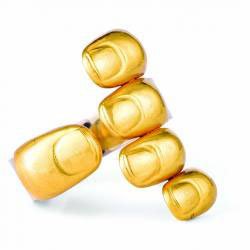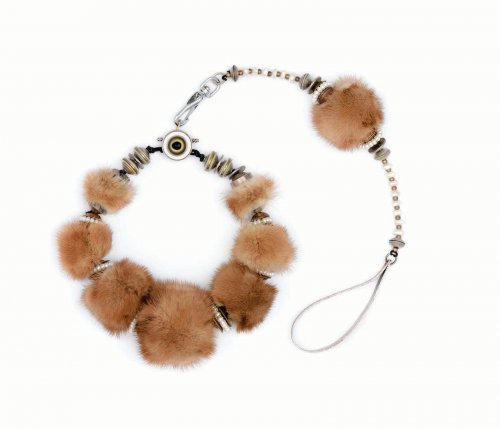Jewelry to Think By
Jewelry to Think By
The autumn weekend that opens October will mark a golden harvest for the Los Angeles County Museum of Art, as it presents the exhibition “Beyond Bling: Jewelry from the Lois Boardman Collection” and the associated symposium “Jewelry Matters.” A comprehensive scholarly catalogue documenting the core collection accompanies the show.
What motivates a collector to amass more than 300 pieces of wearable jewelry? Throughout her 30 years of acquisition, Boardman has maintained that she is merely the “custodian” of the collection. As Boardman’s collection goes on public display – and custody is transferred – we leaned in to hear about the big reveal.
Why do you want to give away your coveted jewelry?
Owning more than 300 pieces of jewelry – you can’t wear it all at the same time. And my family has no claims on it.
Why did you choose LACMA to be the recipient of your generosity?
I have a history with LACMA and the decorative arts and design department going back to the mid-1990s, including my tenure as chairperson of the museum’s support group, the Decorative Arts Council. Previous to this involvement, I had worked at the Pasadena Museum of Art in various capacities, and I understand the reliance on major collection donations. It was also important for me to place the collection in Los Angeles, my adoptive metropolis (I was born in Chicago), as many family members and friends live in Southern California, and I want them to enjoy the collection.
Is the transfer of your jewelry collection to a public institution a milestone for you?
Absolutely. It’s a momentous occasion. After spending countless hours with LACMA curators Rosie Mills and Bobbye Tigerman – researching and cataloguing the collection and lunchtime meetings every couple of weeks – you began to feel part of a team with a common goal. It’s also a momentous time for the artists represented in the collection. Having their material in a public collection ensures their legacy.
Let’s talk about the character of your collection. Collectively, do the pieces follow the trajectory of advances in technology and materials? Is the collection composed of pieces that fit into traditional categories?
There are traditional pieces and unconventional ones. The range of materials covers the spectrum from precious to non-precious. It’s everything from gold, silver, copper, bronze, rubber, cork, aluminum, wood, ceramics, glass, plastics, feathers, leather, and more. Some pieces are made using traditional metalsmithing techniques, some are fabricated by using technologies such as 3D-printing and digital imaging, and still others are created with experimental materials and methods.
Is there a theme that threads through the collection?
The collection represents a core of American and international jewelers who have made an imprint on the contemporary jewelry movement. And, although I have collected broadly, primarily from the 1970s forward, I have also collected several artists in depth – those artists whose works speak to me, with whom I feel an intimate connection when I wear their pieces. These artists – Nancy Worden is an example – I’ve gotten to know personally, and they’ve become part of the fabric of my life.
Some of the pieces you wear have a definite attitude. Is the intent to provoke a response, a reaction from the viewer?
The simple answer to that question is yes. Some of the pieces I’ve collected engage provocative themes: gender politics, the sociopolitical, race issues, comments on commodification and consumerism; as a mirror of life, they are a statement about our contemporary culture. The pectoral piece by Carolyn Kriegman (nicknamed “Miss America”) is a case in point: Its red, white, and blue color scheme, its plastic material, and its rotating stars that form the nipples of the breastplate serve as obvious criticism of American politics and culture writ large. And I guess you could say it’s a piece of kinetic art; when I wear it, the stars twirl as I move.
Tell us about the joy of collecting.
The joy has been the thrill of the hunt – and developing my eye aesthetically so I can search for significant pieces through personal interaction and through the internet. I buy globally and wear locally. The additive benefit is the increased network of artists, curators, dealers, and enthusiasts that has formed organically over the course of my collecting years.
I’ve also now found joy in giving: the joy of sharing the collection with the public, and increasing the awareness and appreciation of those who are inspired by jewelry.
“Beyond Bling” runs through February 5. Jo Lauria is an independent curator and writer in Los Angeles.






